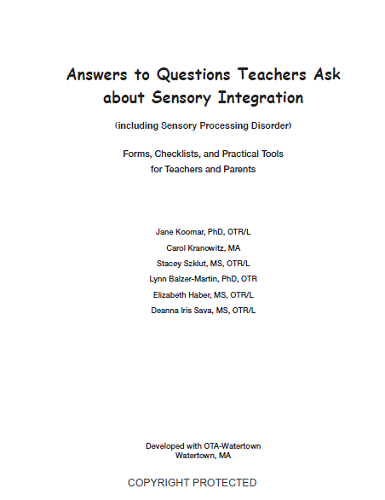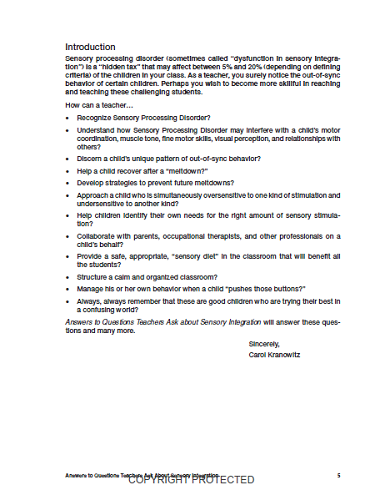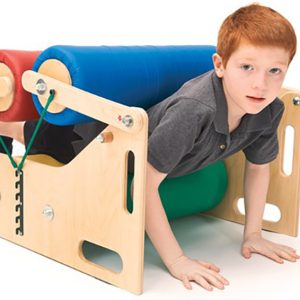ANSWERS TO QUESTIONS TEACHERS ASK ABOUT SENSORY INTEGRATION: FORMS, CHECKLISTS, AND PRACTICAL TOOLS
Author(S): Carol Kranowitz, Stacey Szklut, Lynn Balzer-Martin, Elizabeth Haber, Deanna Iris Sava
Award Winning Book: Learning Magazine, Teacher’s Choice Award
With up to 20% of the students in any given classroom affected by Sensory Integration Disorder, Answers to Questions is an invaluable resource for teachers of pre-school through high school.
You know them: they can’t get their coats on straight, are easily distracted, impulsive, over- or under-sensitive to sounds, lights, textures, etc. In this book, you’ll find tried-and-true instructions for developing their fine motor, “organizing,” and motor planning skills, and providing an appropriate “Sensory Diet” that will benefit all your students.
Checklists help you identify students who have difficulty processing sensory information. Winner of Learning magazine’s Teachers’ Choice Award, this book and the tools within it will help teachers learn how to:
- Recognize Sensory Processing Disorder.
- Understand how Sensory Processing Disorder may interfere with a child’s motor coordination, muscle tone, fine motor skills, visual perception, and relationships with others.
- Discern a child’s unique pattern of out-of-sync behavior.
- Help a child recover after a meltdown.
- Develop strategies to prevent future meltdowns.
- Approach a child who is simultaneously oversensitive to one kind of stimulation and under-sensitive to another kind.
- Help children identify their own needs for the right amount of sensory stimulation.
- Collaborate with parents, occupational therapists, and other professionals on a child’s behalf.
- Provide a safe, appropriate, “sensory diet” in the classroom that will benefit all students.
- Structure a calm and organized classroom.
- Manage his or her own behavior when a child “pushes those buttons”.
- Finally, this book will help teachers to always remember that these are good children who are trying their best in a confusing world!
Binding: Paperback
Pages: 64










